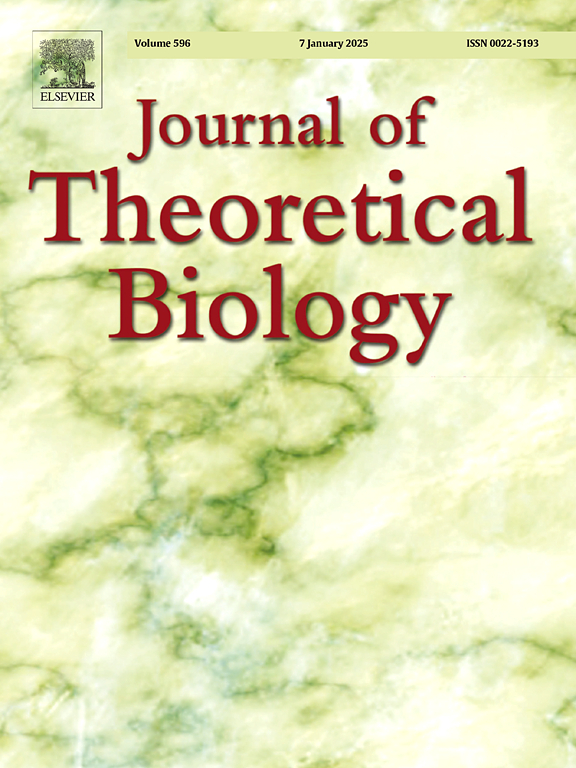城市间感染和规模异质性在遏制战略中的作用。
IF 2
4区 数学
Q2 BIOLOGY
引用次数: 0
摘要
本研究考察了区域封锁战略在减轻病原体在区域单位(下文称为城市)传播方面的有效性。我们开发了简化的模型来分析在流行病浪潮期间一个国家内城市之间的感染传播。当城市内的感染人数超过定义的阈值时,开始对城市进行隔离。我们比较了两种策略:策略(P)包括规定与城市规模成比例的阈值,而策略(U)下的所有城市都使用相同的阈值。考虑到城市规模的重尾分布,策略(P)可能比策略(U)导致更多来自大城市的继发感染。构建了随机图模型,将感染传播表示为渗透过程。特别地,我们考虑了一个城市之间的流动性仅取决于城市规模的模型。我们通过比较(P)和(U)策略下的隔离个体数与流行波结束时感染总数的比率来评估这两种策略的相对效率。此外,我们还推导出疾病流行率和基本繁殖数的分析公式。我们的模型使用来自法国、波兰和日本的移动数据进行校准,并通过仿真验证。研究结果表明,法国和波兰城市之间的流动性主要取决于城市规模。然而,观察到与日本数据的拟合度很差,这突出了在建模中考虑其他因素(例如某些国家的地理)的重要性。我们的分析表明,这两种战略在法国和日本的效果相似,而战略(U)在波兰表现出明显的优点。本文章由计算机程序翻译,如有差异,请以英文原文为准。
Inter-city infections and the role of size heterogeneity in containment strategies
This study examines the effectiveness of regional lockdown strategies in mitigating pathogen spread across regional units, termed cities hereinafter. We develop simplified models to analyze infection spread across cities within a country during an epidemic wave. Isolation of a city is initiated when infection numbers within the city surpass defined thresholds. We compare two strategies: strategy consists in prescribing thresholds proportionally to city sizes, while the same threshold is used for all cities under strategy . Given the heavy-tailed distribution of city sizes, strategy may result in more secondary infections from larger cities than strategy .
Random graph models are constructed to represent infection spread as a percolation process. In particular, we consider a model in which mobility between cities only depends on city sizes. We assess the relative efficiency of the two strategies by comparing the ratios of the number of individuals under isolation to the total number of infections by the end of the epidemic wave under strategy and . Additionally, we derive analytical formulas for disease prevalence and basic reproduction numbers.
Our models are calibrated using mobility data from France, Poland and Japan, validated through simulation. The findings indicate that mobility between cities in France and Poland is mainly determined by city sizes. However, a poor fit was observed with Japanese data, highlighting the importance to include other factors like e.g. geography for some countries in modeling. Our analysis suggest similar effectiveness for both strategies in France and Japan, while strategy demonstrates distinct merits in Poland.
求助全文
通过发布文献求助,成功后即可免费获取论文全文。
去求助
来源期刊
CiteScore
4.20
自引率
5.00%
发文量
218
审稿时长
51 days
期刊介绍:
The Journal of Theoretical Biology is the leading forum for theoretical perspectives that give insight into biological processes. It covers a very wide range of topics and is of interest to biologists in many areas of research, including:
• Brain and Neuroscience
• Cancer Growth and Treatment
• Cell Biology
• Developmental Biology
• Ecology
• Evolution
• Immunology,
• Infectious and non-infectious Diseases,
• Mathematical, Computational, Biophysical and Statistical Modeling
• Microbiology, Molecular Biology, and Biochemistry
• Networks and Complex Systems
• Physiology
• Pharmacodynamics
• Animal Behavior and Game Theory
Acceptable papers are those that bear significant importance on the biology per se being presented, and not on the mathematical analysis. Papers that include some data or experimental material bearing on theory will be considered, including those that contain comparative study, statistical data analysis, mathematical proof, computer simulations, experiments, field observations, or even philosophical arguments, which are all methods to support or reject theoretical ideas. However, there should be a concerted effort to make papers intelligible to biologists in the chosen field.

 求助内容:
求助内容: 应助结果提醒方式:
应助结果提醒方式:


